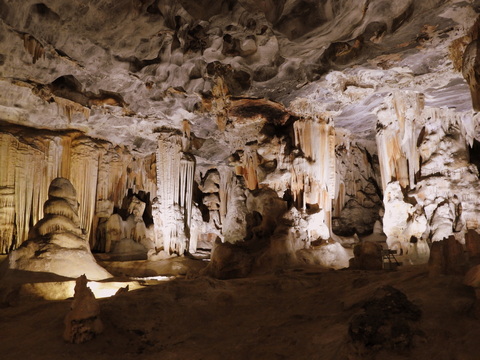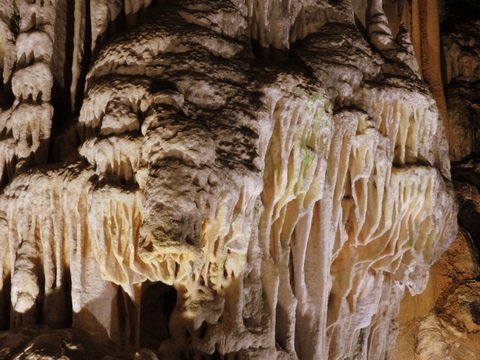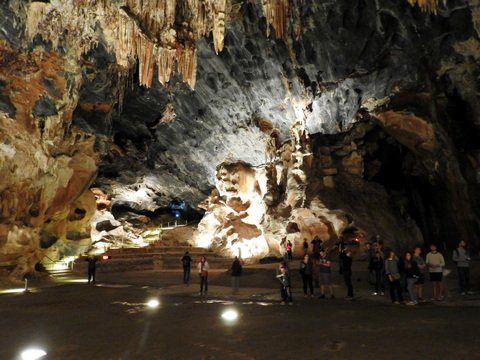About 30 km outside the town of Outdshoorn in the area of the Klein Karoo in the Western Cape Province of South Africa, lie the magnificent Cango Caves – one of the wonders of the world.
These limestone caves were discovered in 1780 by J Van Zyl who was a farmer in the Zwartberg Mountains. Thousands of years ago the entrance to the caves was used as a shelter by a tribe of the KhoiSan people. The Cango caves are made up of dripstone caverns opening up into soaring stalagmite formations in enormous halls.
The halls and tunnels run on for about 4 km but only about a quarter is open to the public who are only permitted to enter with a guide supervising the groups of visitors. The first great chamber in the caves is named Van Zyl’s hall after its discoverer.
The fantastic shapes in the caves are made up mainly of calcium carbonate that develop as lime water drips from the stones and then evaporates. The structures that grow from the ground up are called stalagmites while those growing downwards are called stalactites. When these two structures meet they form a column and are called stalagnate. These caves attract many overseas visitors. The Cango caves should definitely not be missed and are an integral part of a trip along the Garden route.
Sensible footwear and light clothing are recommended when touring the caves as the temperature inside is warm and humid. The caves are amply lit making the pathways and stairs easy to traverse and to enjoy, offering ample opportunities for photographs. The Cango Caves are the only caves in Africa that offer a choice of adventure or standard tours. The adventure tours involve wriggling through very narrow passageways and scrambling across difficult formations. Whichever choice of tour you decide on, a visit to the magnificent Cango Caves will be a never to be forgotten experience.




